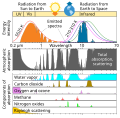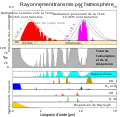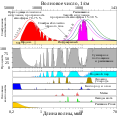Faịlụ:Atmospheric Transmission.svg
Ọdịdị

Size of this PNG preview of this SVG file: 614 × 600 piksels. Ndị ọzọ mkpebi:246 × 240 piksels | 491 × 480 piksels | 786 × 768 piksels | 1,048 × 1,024 piksels | 2,096 × 2,048 piksels | 741 × 724 piksels.
Failụ si na nke mbu (usòrò SVG, nà áhà pixel 741 × 724, ívụ usòrò: 321 KB)
Ịta nke usòrò
Bìri èhì/ogè k'ị hụ òtù ụ̀fa dị̀ m̀gbè ahụ̀.
| Èhì/Ogè | Mbọ-aka | Ógólógó na asaá | Òjìème | Nkwute | |
|---|---|---|---|---|---|
| dị ùgbu â | 16:19, 18 Eprel 2023 |  | 741 × 724 (321 KB) | Efbrazil | Adding white background color so renders correctly on smartphone |
| 20:29, 7 Ọgọọst 2022 |  | 741 × 724 (321 KB) | Efbrazil | color bug fix | |
| 20:00, 7 Ọgọọst 2022 |  | 741 × 724 (321 KB) | Efbrazil | Fixed translations as best as possible using text editor for new layout | |
| 19:34, 7 Ọgọọst 2022 |  | 741 × 724 (320 KB) | Efbrazil | Fixing text alignment | |
| 19:26, 7 Ọgọọst 2022 |  | 741 × 724 (320 KB) | Efbrazil | Graphical improvements as per discussion page | |
| 17:59, 17 Febụwarị 2022 |  | 741 × 724 (208 KB) | Pierre cb | File uploaded using svgtranslate tool (https://svgtranslate.toolforge.org/). Added translation for fr. | |
| 22:10, 18 Maachị 2021 |  | 741 × 724 (180 KB) | Cepheiden | german labels adjusted | |
| 22:09, 18 Maachị 2021 |  | 741 × 724 (180 KB) | Cepheiden | correction of labels | |
| 22:06, 18 Maachị 2021 |  | 741 × 724 (180 KB) | Cepheiden | File uploaded using svgtranslate tool (https://svgtranslate.toolforge.org/). Added translation for de. | |
| 21:52, 18 Maachị 2021 |  | 741 × 724 (154 KB) | Cepheiden | =={{int:filedesc}}== {{Information |description= {{en|1=This figure shows the absorption bands in the Earth's atmosphere (middle panel) and the effect that this has on both solar radiation and upgoing thermal radiation (top panel). Individual absorption spectrum for major greenhouse gases plus Rayleigh scattering are shown in the lower panel.}} |date=2021-03-18 |source=This figure was prepared by Robert A. Rohde for the Global Warming Art project. |author=[[User:Д.Ил... |
Ojiji faịlụ
Ihe ndị na-eso 2 ihe eji Ihu akwụkwọ eme na faịlụ a:
Ejiji failụ zụrụ ọha
Wikis ndi a edeputara na eji kwa failụ a:
- Ihe eji na ar.wikipedia.org
- Ihe eji na de.wikipedia.org
- Ihe eji na el.wikipedia.org
- Ihe eji na en.wikipedia.org
- Ihe eji na fr.wikipedia.org
- Ihe eji na gl.wikipedia.org
- Ihe eji na ha.wikipedia.org
- Ihe eji na pt.wikipedia.org
- Ihe eji na simple.wikipedia.org
- Ihe eji na zh.wikipedia.org










